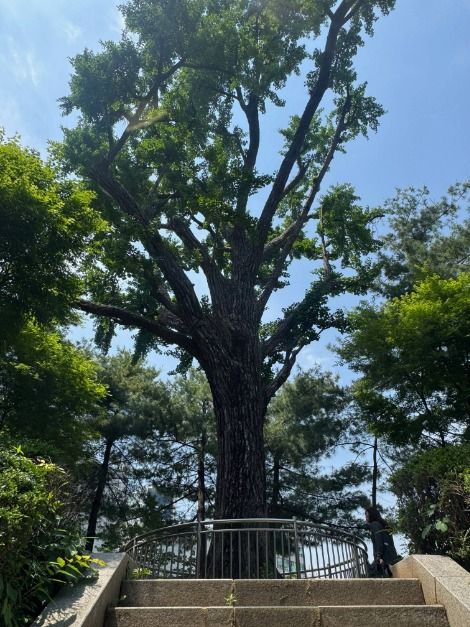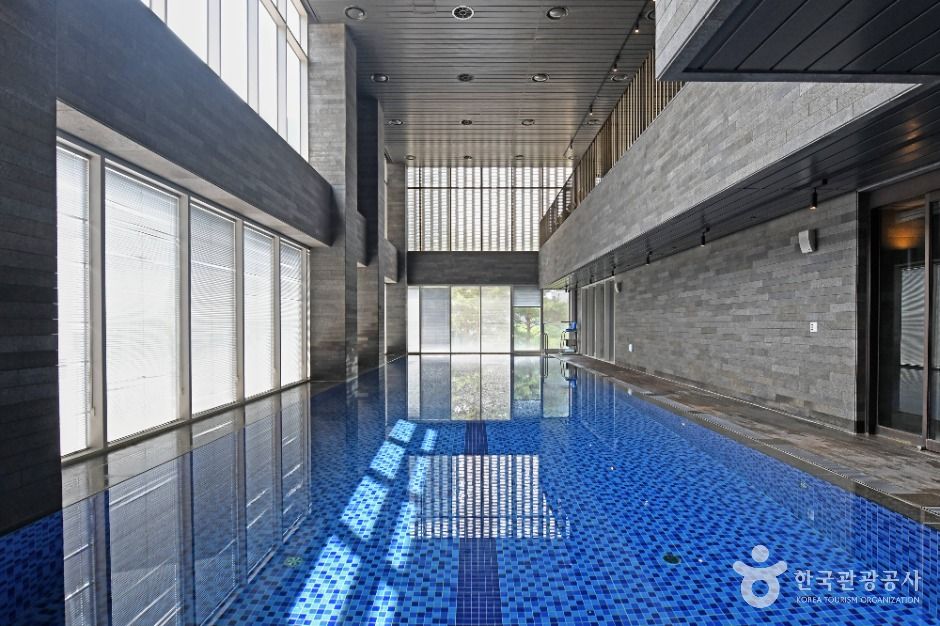Ginkgo Tree at the Fortress Well Site (성주우물터 은행나무)
2025-09-15
Gayang-dong, Gangseo-gu, Seoul
Ginkgo Tree at the Fortress Well Site refers to the old ginkgo tree, which have been designated as a protected tree in 1988, located in Gayang-dong, Gangseo-gu in Seoul. Until the Gayang apartment complex was built, the area where the ginkgo tree is located was a historic place with a beautiful landscape and many anecdotes and legends. Before the Goryeo dynasty, its location served as an important strategic point along the lower part of the Hangang River, where it had a ferry dock with boats that bypassed Haengju and Paju as a shortcut for commuting between Kaeseong and Pyongyang, and is associated with many legends of historical figures who had used the dock. The ginkgo tree also appears in a painting drawn by Gyeomjae Jeongseon, a historic painter of the Joseon dynasty.
Heidi Haus (하이디하우스)
2025-09-24
11, Seongchon 4-gil, Seocho-gu, Seoul
Heidi Haus is a private club that offers a premium wellness and lifestyle in the heart of the city. Its customized programs are designed not only for restoring health but also for achieving peace of mind. With a spa using natural bedrock water, a state-of-the-art fitness center, and restaurants and cafés that guarantee comfortable relaxation, Heidi Haus provides everything for a well-balanced life. The highlight is its spa, themed around 12 motifs such as rose, lavender, and beauty. It uses mineral-rich bedrock water drawn from 1,000 meters underground, which is known to help with skin hydration, blood circulation, fatigue recovery, and immunity strengthening. The spa also features a sauna zone with five distinct styles, including far-infrared, steam, and Finnish saunas.
MEDIPACT (메디팩트)
2025-10-23
2nd Floor, 9 Bongcheon-ro 31-gil, Gwanak-gu, Seoul
Medipact is a company that provides an integrated medical platform encompassing foreign patient attraction, global influencer marketing, and interpretation support services. For international patients, Medifact offers personalized one-on-one services to ensure an optimized medical experience, while leveraging its global influencer network to enhance the brand value of partner hospitals and strengthen their international competitiveness.
Furthermore, Medifact goes beyond patient-centered services by operating educational programs for foreign physicians and medical professionals, transferring Korea’s advanced medical technologies and specialized skills. Through these initiatives, Medifact contributes to spreading the excellence of Korean healthcare worldwide and serves as a vital bridge for global medical cooperation.
First Eye Clinic (퍼스트안과의원)
2025-09-23
6th–7th Floors, Eungwa & Medical Building, 5 Gudeok-ro, Jung-gu, Busan
Good Ideas for Your Eyes First eye department for your eye health. There are many places where vision correction surgery is performed, such as LASIK and LASEK. However, there are few ophthalmologists that can properly treat eye diseases such as retinal, glaucoma, cataract, and childhood progressive myopia. First Eye Clinic has increased treatment safety and precision by utilizing university hospital-level advanced equipment by medical staff with extensive experience and know-how in surgery for severe eye diseases.
ID Clinic Gangnam (강남 아이디의원)
2025-10-23
11th Floor, Daewon Building, 437 Gangnam-daero, Seocho-gu, Seoul
ID Clinic Gangnam is an aesthetic and dermatology clinic under the ID Hospital Group, offering customized treatments such as non-surgical lifting, skin boosters, botox & fillers, and laser procedures. With a dedicated multilingual team, we provide convenient care for international patients. Equipped with the latest technology and skilled medical professionals, we ensure safe treatments and highly satisfying results.
KwangDong Hospital (광동병원)
2025-10-23
612 Bongeunsa-ro, Gangnam-gu, Seoul
Kwangdong Hospital, located in the heart of Samseong-dong, Gangnam, is a premium secondary hospital combining university-level expertise with the convenience of a private clinic. We offer diverse departments, including Allergy, Neurology, Orthopedics, Rehabilitation, Family Medicine, and Korean Medicine, along with specialized centers such as Dementia Prevention, Asthma & Allergy, and Anti-Aging & Immunity. With state-of-the-art equipment and experienced medical staff, we provide premium health screening program and patient-tailored integrative care, including regenerative and functional medicine, delivering trusted total healthcare services to both domestic and international patients.
K-medi Spring (한강애봄)
2025-12-09
6th Floor, 63 Dongsomun-ro, Seongbuk-gu, Seoul
HanGang AeBom is a certified agency specializing in attracting international patients, offering customized programs that combine Korea’s advanced medical services with tourism. The agency collaborates with medical institutions to arrange consultations, interpretation, accommodation, and travel itineraries.
SHINE BEAUTY MEDICAL (해우광해외무역)
2025-10-23
#510, MV Tower, 55 Gangnam-daero 132-gil, Gangnam-gu, Seoul
This International Medical Agency Company has been engaged in international patient attraction since 2015, focusing on South Korea and Vietnam (Hanoi and Ho Chi Minh City). The representative has experience at Konkuk University Hospital/ International Medical Center and currently serves as an expert advisor for the Ministry of Health and Welfare and the Korea Health Industry Development Institute in the fields of overseas medical expansion and international patient attraction. In addition, the institution is designated as an official international patient attraction partner of Gangnam District, Seoul, and collaborates with a wide range of medical institutions—including plastic surgery clinics, dermatology clinics, urology clinics, dental clinics, ophthalmology clinics, and Korean traditional medicine hospitals—to support both international patient attraction and overseas medical expansion.
Slimfit Korean Medicine Clinic (슬림핏한의원)
2025-10-23
4th Floor, 784 Gaya-daero, Busanjin-gu, Busan
Slimfit Korean Medicine Clinic is a weight loss clinic that pursues healthy dieting.
Located in Busan, our clinic has gained popularity not only among local patients but also among many international visitors through word of mouth. We provide capsule-type herbal prescriptions designed to support an easier, more convenient, and healthier weight loss journey.
Jeollanam-do Heart Health Healing Center (전라남도 마음건강치유센터)
2025-09-16
121, Rohaseu-ro, Anyang-myeon, Jangheung-gun, Jeollanam-do
Jeollanam-do Heart Health Healing Center is a specialized mental health and wellness facility located on the second floor of Wonkwang University Jangheung Integrative Medical Hospital. Established to support individuals experiencing emotional challenges such as depression, anxiety, and stress in the wake of COVID-19, the center offers a variety of experiential healing programs. These include integrative medicine treatments rooted in traditional Korean medicine, forest therapy, and aromatherapy. The wellness programs are offered as one-day, two-day (1 night/2 days), or three-day (2 nights/3 days) courses. Each consists of integrative medical treatments, therapeutic sessions, and Korean medicine education, such as making Gyeongokhwan herbal pills. For the two-day and three-day courses, participants can also enjoy forest therapy program is held at Jeongnamjin Cypress Forest Woodland. Programs accommodate 12-24 people, with up to three groups accepted per day. Sessions are not available on weekends or public holidays.



 English
English
 한국어
한국어 日本語
日本語 中文(简体)
中文(简体) Deutsch
Deutsch Français
Français Español
Español Русский
Русский